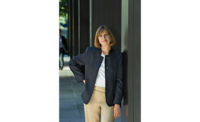I don’t like long goodbyes, so this one will be short.
But I want to let you know that after almost a dozen wonderful years as editor in chief of RECORD, I have decided to step down, though I will remain consulting editor. It has been an honor to lead this venerable publication (131 years old and going strong) and to work with a first-rate staff of editors and writers, past and present. Most of all, it has been a privilege to cover the best of the projects that you as architects create, as well as the larger world to which you contribute.
In my first Editor’s Letter, in the June 2011 issue, I wrote about the tradition of the citizen architect. I was inspired in part by what I had seen that May, visiting New Orleans for the AIA convention, in the civic engagement of the late architect Allen Eskew and his partner Steve Dumez, who were helping to bring back their hometown after the devastation of Hurricane Katrina in 2005.
So, while promising that RECORD would continue its core mission of publishing exemplary contemporary projects, I added that it shouldn’t “only hold a mirror to the profession’s built work” but “must be an advocate, a sharp elbow, a resonant voice for design’s essential role in grappling with the country’s most urgent difficulties.”
The years since then have offered plenty of opportunity to flex that elbow. At RECORD, we have explored the ongoing problems of cities; the lack of affordable housing; social injustice and inequity in the public realm—and reported on innovative ideas from the architectural community to address such urgent difficulties.
In looking at practice, we’ve championed the role of women, while reporting on the profession’s poor track record regarding diversity.
And we’ve continued to closely cover the gravest catastrophe of our age, the climate crisis. A decade ago, we looked in particular at how the design of structures can save energy, while today we understand more thoroughly the critical role of embodied carbon in building, from material extraction and fabrication through construction, and its impact on global warming.
All along, we’ve been inspired by the sheer inventiveness that architects bring to whatever they design. We’ve taken readers around the globe, from a modular research station in Antarctica, with legs that can move on skiis, by Hugh Broughton Architects, to a school by MASS Design Group, built in a Congolese village so remote that materials were brought in by bicycle or motorbike, and an underwater restaurant in Norway on the North Sea by Snøhetta. Over the past decade, we’ve showcased about a thousand projects of every type, at every scale, from a chair to a skyscraper to a school campus.
To the architects who have shared their work with us, I want to extend my gratitude, and thanks to all of you for supporting RECORD through your readership.
Now please join me in welcoming the new editor in chief, Josephine Minutillo, who has the ideal experience for the job, both from her training as an architect and because of her consummate skills as an editor. She will bring a fresh perspective to RECORD across all its platforms.
I do hope you enjoy this issue, which happens to refer to several leading women in architecture. Pritzker laureate Kazuyo Sejima, with her partner in SANAA, Ryue Nishizawa, has designed a new landmark for Sydney, the Gallery of New South Wales expansion. A founding principal of Leddy Maytum Stacy, the San Francisco firm behind the Nueva School Science and Environmental Center, is Marsha Maytum, an architect who’s dedicated her career to humane, sustainable, community-centered design. The Serpentine Gallery in London announced that its 2023 temporary summer pavilion will be created by the Paris-based Lebanese architect Lina Ghotmeh, whose apartment building Stone Garden, in Beirut, was featured on RECORD’s cover in October 2020.
Last, Carol Ross Barney, honored as RECORD’s Women in Architecture Design Leader in October, has been named this year’s AIA Gold Medal winner. About her extensive work in the public realm, the Chicago architect has said, “I see myself as part of a community, and that makes me not only the designer but the client.” And it makes her a citizen architect, too.





